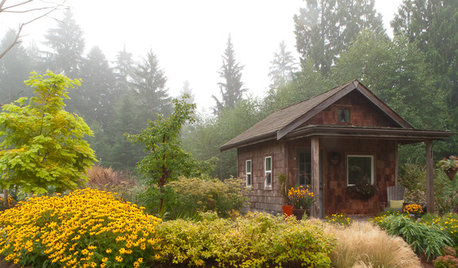pics of peach leaf curl- despite using copper
17 years ago
Related Stories

EDIBLE GARDENSHow to Grow Your Own Peaches and Nectarines
Make gardening a little sweeter with these juicy fruits, which you can eat after plucking or preserve for later
Full Story
COLORHow to Use Marsala, Pantone’s 2015 Color of the Year
Pantone digs deep and goes earthy with its selection. Here are ways to make it work in your home
Full Story
BASEMENTSHouzz TV: Ashton Kutcher Surprises Mom With the Basement of Her Dreams
In a new Houzz original series, the actor uses the Houzz app to find a designer and shop products to turn the dark area into a bright space
Full Story
DECORATING GUIDES25 Design Trends Coming to Homes Near You in 2016
From black stainless steel appliances to outdoor fabrics used indoors, these design ideas will be gaining steam in the new year
Full Story
LOFTSHouzz Tour: 12 Years of Tinkering Produce an Amazingly Artful Loft
Major DIY efforts turn 3 units in a former Portland factory into a single home brimming with personality
Full Story
PLANTING IDEASGreat Garden Combo: A Fall Landscape Scene That Lasts
Span the seasons with trees, shrubs and grasses that offer color and texture in abundance
Full Story
KITCHEN DESIGNWonderful Wood Countertops for Kitchen and Bath
Yes, you can enjoy beautifully warm wood counters near water sans worry (almost), with the right type of wood and sealer
Full Story
SMALL KITCHENS10 Things You Didn't Think Would Fit in a Small Kitchen
Don't assume you have to do without those windows, that island, a home office space, your prized collections or an eat-in nook
Full Story
COLORSet the Mood: 4 Colors for a Cozy Bedroom
Look to warm hues for that snuggle-friendly feeling
Full Story
LIFEHow Do You Make Your Tea and Coffee in the Morning?
A morning cup is a must for many, and preparation comes in many guises. We look at coffee and tea habits across the Houzz community
Full Story




geraldo
jellyman
Related Discussions
Peach Leaf Curl - time to start over?
Q
Peach leaf curl free peach?
Q
I got peach leaf curl...
Q
Peach leaf curl questions.
Q
joereal
lycheeluvaOriginal Author
jellyman
lycheeluvaOriginal Author
jellyman
joereal
lycheeluvaOriginal Author
joereal
geraldo
jim123
Scott F Smith
geraldo
lycheeluvaOriginal Author
altadenamara
alan haigh
lycheeluvaOriginal Author
alan haigh
Michael
lycheeluvaOriginal Author
jellyman
alan haigh
altadenamara
lycheeluvaOriginal Author
altadenamara
joereal
alan haigh
ca_cherry_grower
nimzo
joereal
theaceofspades
ca_cherry_grower